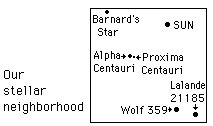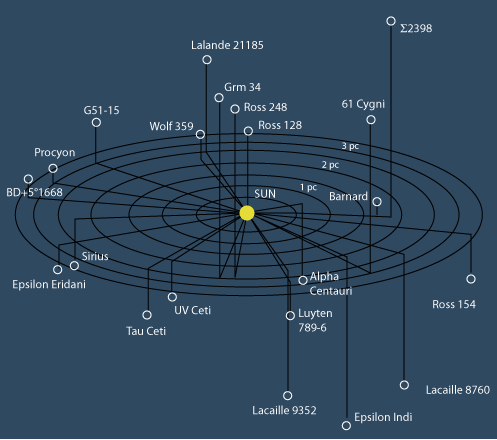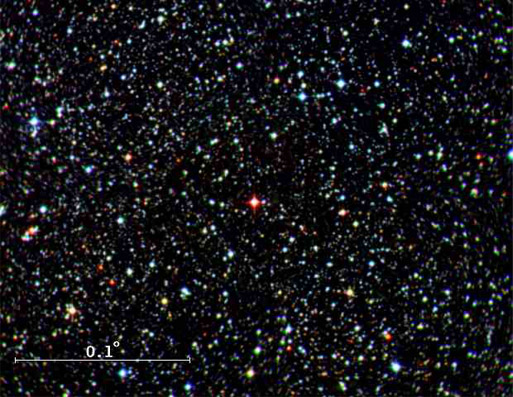The Closest Star
The closest star to the sun is Proxima Centauri, but its brighter neighbor Alpha Centauri, a double star, is so nearly the same distance that data about it are usually given. It is about 4 light years distance, or about 3.8x1016 m. |  | |
If our sun, which has diameter 1.392 x 109 meters were scaled down to the size of a period on a printed page, which is nominally about 0.5 mm, then the distance to Alpha Centauri would be about 13.6 km or about 8 miles away. If the Earth were scaled to 0.5 mm diameter, then the Sun would be a ball of diameter 5.4 cm ( a little smaller than a tennis ball) at a distance of 5.9 m (19 ft). On this scale, Alpha Centauri would be 1.48 x 106 meters or about 890 miles away. If the sun were scaled to a 1 foot radius, then Alpha Centauri would be about 10,300 miles away. The parallax of
Proxima Centauri as the Earth orbits the sun is
about equivalent to that of a dime at a distance of
6 kilometers.
There are 40 stars within 16 light years of the Earth. Ward & Brownlee comment that in the same space in a globular cluster, there might be 1000 or more. "The M15 globular cluster has some 30,000 stars packed into a space only 28 light-years across."
|
Index |


